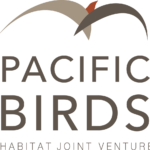Economy
Healthy oak and prairie habitats produce direct economic benefits for landowners and local communities.
Oregon Vineyard and oaks Credit: NRCS
Bridging Land Management and Livelihoods
Risk-ready communities are a dynamic concept involving iterative collective learning across social, ecological, and economic systems. When applying this model to the management of oak and prairie habitats, risk-ready communities connect land use, regional agricultural viability, food systems, and ecological processes. Collaborative partnerships that think beyond the “preserve” model are building risk-ready communities by connecting animal and fiber production systems and conservation grazing in a way that builds soil health and supports habitat while also providing a livelihood for rural families. Advancing strategies through a risk-ready community lens keeps working lands working while reducing development threats.
Protecting Communities from Wildfire
Extreme wildfires can have heartbreaking impacts on local communities. Oregon white oak woodland and savanna, in particular, can be extremely important for reducing extreme wildfire risk– their waxy leaves lack the terpenes and other volatile oils that conifers have, and oak’s broad leaves burn slowly and are highly fire resistant. The open canopy structure of oak woodland and savanna means wildfires are more likely to stay on the ground and not become fast-traveling crown fires with extreme flame lengths. As a part of a biodiverse landscape, oak habitats can help reduce fire spread and offer control points when suppression is needed to protect lives and property.

